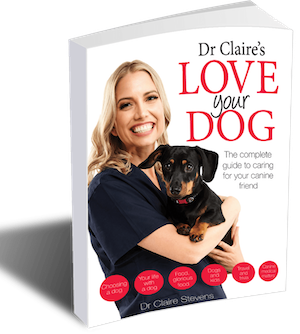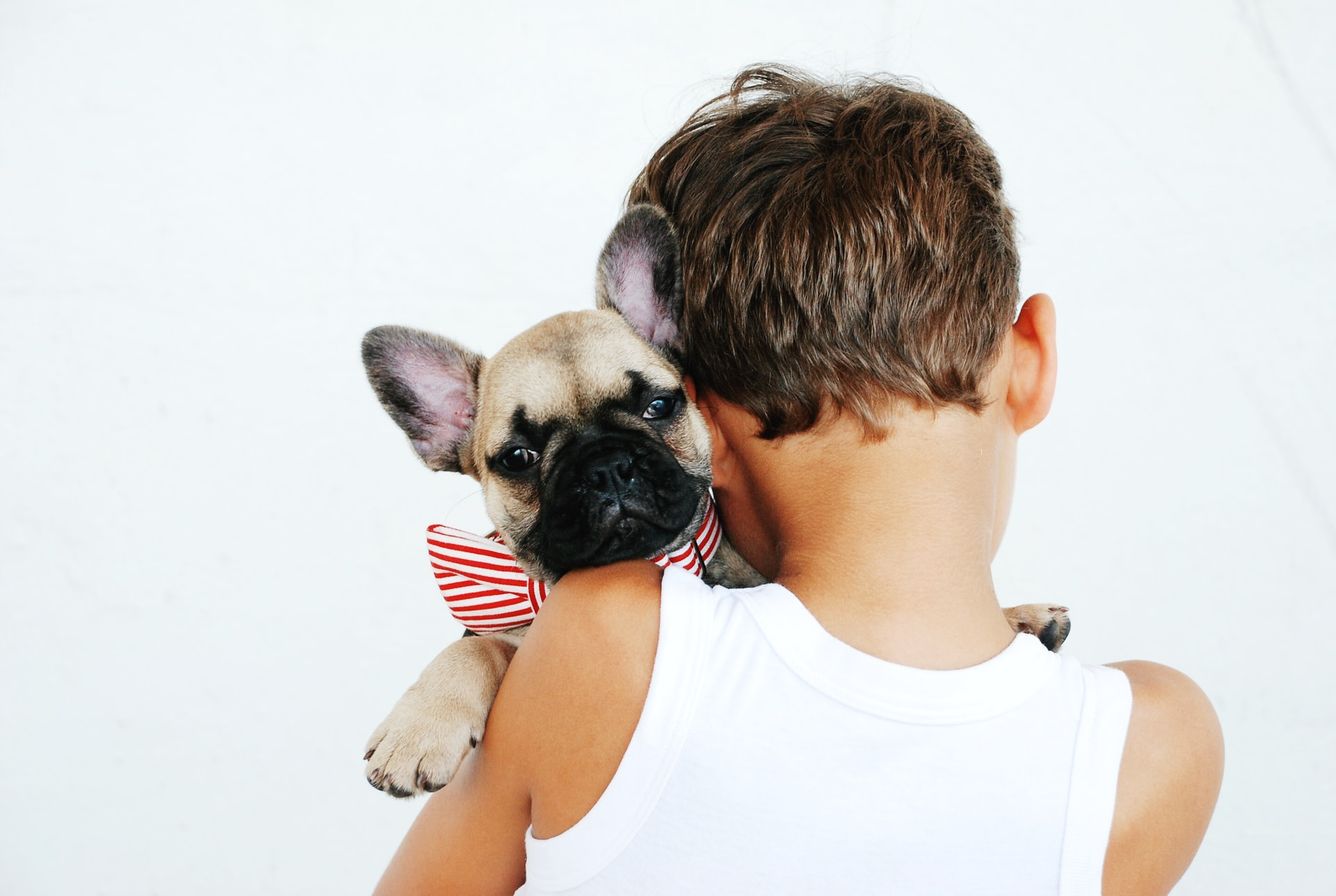While giving an animal a forever home can be an exciting prospect and a rewarding experience for your child, teaching them responsibility and compassion, there are inherent risks in raising a child with a dog in your home.
Children are vulnerable due to their small size and unpredictable behaviour. Even the most well-trained dog can become aggressive when provoked or improperly handled. There are however some necessary precautions and preparations you can practise that will help keep your child safe around your new pet. (And if you already have a dog in the house but have just learned you’re pregnant, scroll down for tips on how to introduce baby to dog.)
Keeping children safe around dogs
Children should learn to tune in to their dog’s body language and emotions to avoid untoward incidents. For example, your child might give affection at the wrong time resulting in a nip or a bite. As a responsible pet parent, it is your role to pass on your pet care knowledge to your child. Make sure all members of your family are consistent with their training and in enforcing household rules. Here are some general tips and guidelines to keep your child safe:
1. Teach your child to respect the dog’s space
Let them eat in peace, leave their toys alone unless you’re playing catch, do not disturb them when they are sleeping and do not get in their face. A tight hug can also be agitating to dogs, while getting your face in close contact to theirs can be misinterpreted as aggression. Just like humans, dogs have different personalities and they adapt to their owner’s habits. This means they can be trained to tolerate these actions, but until they get used to such close contact, it’s better to err on the side of caution.
2. Teach your toddler how to pat the dog
Children, especially younger ones, don’t instinctively know what to do with a dog. With your toddler on your lap, encourage your dog to sit close to you. Start by letting the dog sniff your toddler. Then, pat your dog gently and guide your toddler’s hand to do the same. If your toddler starts getting rough, say “No” and move them away. Try again when they calm down.
3. Discourage rough play like climbing, riding or stepping on the dog
Most family dogs can tolerate boisterous behaviour and play with kids so long as it doesn’t go too far. This also applies to loud noises which can trigger a dog’s fight or flight instincts. Toddlers in their exploratory stage tend to be grabby. Discourage unruly behaviours like yanking the tail and ears or pulling the fur. The pain could incite aggressive behaviour in the dog, possibly biting your toddler.
4. Teach your child how to decode your dog’s behaviour
Get familiar with the different behaviours exhibited by your dog. For instance, if their tail or ears are down, it can be a sign of fear or agitation. Barking can be a warning, an invitation to play or asking to be fed. Learning your dog’s cues and body language will help your child react appropriately and know when to back off.
5. Do not feed your dog scraps from the table
Even when they’re giving you the puppy dog eyes, tell your child to resist giving food. Feeding dogs scraps from the table creates a begger and encourages disruptive behaviour during meal times. Immediately move them to a different room if they start begging.
Watch: Seven ways animals enhance your wellbeing
6. Discourage your dog from jumping up on anyone
Perhaps they’re just happy to see you, but this can escalate quickly if a person misinterprets the dog’s behaviour and reacts defensively. When this happens, tell your child to raise the knee and turn their side or back towards the dog.
7. Provide a safe space for your dog
Give your dog a crate or bed where they can feel safe and comfortable. This space is off limits to your child as part of creating boundaries between them.
8. Install baby gates
If you have an infant or a toddler, installing baby gates will also help to separate your child from the dog and create safe spaces for both of them. This safety barrier allows them to adjust to each other’s presence while avoiding rough play and giving each of them a refuge.
9. Practise zero tolerance for growling and aggression
10. Reward positive behaviour
This applies to both child and dog. Say “Good job” when your child is patting your dog gently. At the same time, you can also give your dog a treat for staying calm while your toddler pats it.
A proactive approach ultimately helps relieve the stress of raising a child around dogs. A calm and gentle approach is the key to your child’s safety around dogs, be it your pet or someone else’s.
How to introduce dogs and babies
What if you already have a dog and have just learned you’re pregnant? Congratulations! Along with the anticipation of welcoming your baby into the world, you must also remember to start preparing your dog for the baby’s arrival. Fortunately, you have roughly nine months to fix any behavioural issues and establish ground rules.
1. Establish your authority
Before the baby arrives, I recommend consulting a professional dog trainer. Even if you consider your dog well-trained, the addition of a new member in your family will naturally alter your routines and dynamics. The most important thing is to establish your dominance. Dogs are pack animals and will naturally follow the alpha, so make sure you are fully prepared to take on the role as the “top dog”. This allows you to maintain authority and establish clear rules and boundaries.
2. Practise new routines
Gradually introduce new routines to your dog. Since your focus will understandably shift to your baby, the sudden change of pace could make your dog restless or jealous. To prevent your dog from resenting your baby for taking away your attention, you can start modifying your dog’s routine before the baby’s arrival.
3. Make the nursery off limits
To establish barriers, do not let your dog in the nursery without your permission. At the same time, you can teach it the “on your mat” or “go to bed” command which conditions it to leave the area when you say the words. Basic commands like “sit” and “stay” are also helpful to keep your dog sitting and waiting patiently at the nursery doorway.
4. Help your dog get used to your baby’s scent and belongings
A dog’s sense of smell is powerful, so gradually familiarise it with your baby’s smell using various objects or toys. You can allow your dog to sniff the objects from a few centimetres away before asking it to leave again. This establishes a rhythm and prepares it for the actual introduction while teaching it to maintain a respectful distance. When the baby is born, bring the baby’s clothes or blanket home to further familiarise it with your baby’s scent.
5. Walk your dog before the introduction
Once your dog is ready to meet the baby, take it on a walk so it can work off any excess energy. After the walk, wait for it to calm down before letting it in the house. Expect your dog to immediately pick up on the now-familiar scent of your baby. Make sure whoever is holding the baby is calm and alert. Keep the baby at a comfortable distance and allow the dog to sniff from a safe distance. If your dog remains calm, you can give it permission to come closer.
6. Maintain constant supervision
Although your baby’s interaction with the dog at this stage will be minimal, it goes without saying that you should never leave them alone together. A baby’s behaviour can be unpredictable and your dog’s reflexive response to any sudden movements or noises, like crying, might result in unintentional injury.

Dr Claire’s debut book, Love Your Dog, features practical veterinary advice on all aspects of caring for your furry friend.
How helpful was this article?
Click on a star to rate it!
0 / 5. 0
Be the first to rate this post!
Dr Claire Stevens
Related posts
Subscribe
Receive personalised articles from experts and wellness inspiration weekly!

